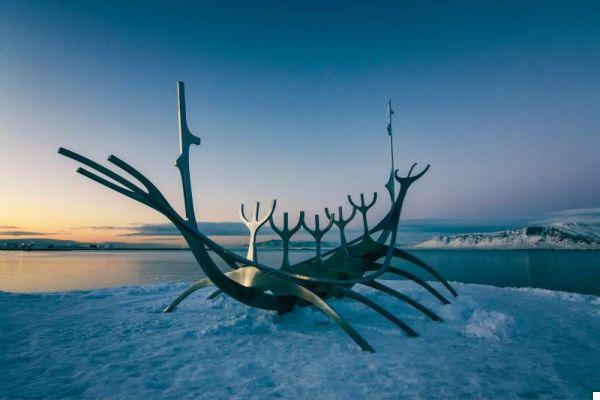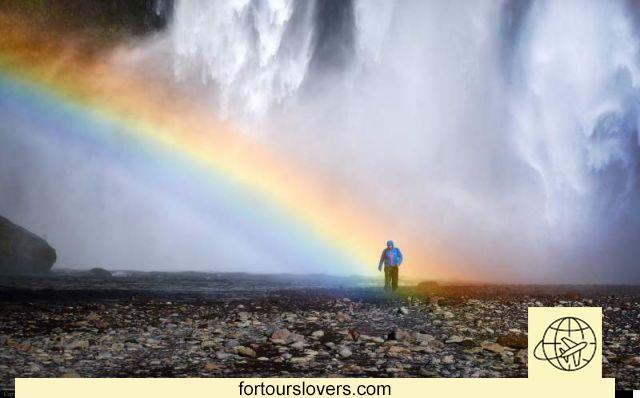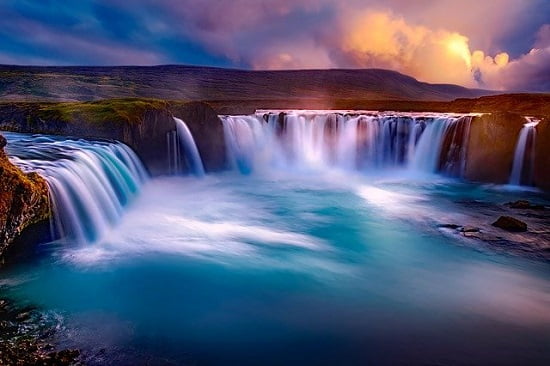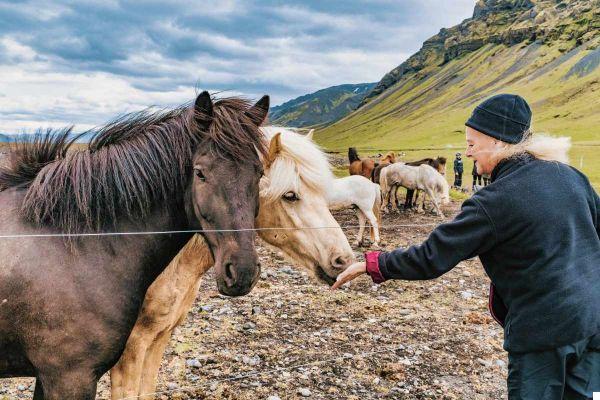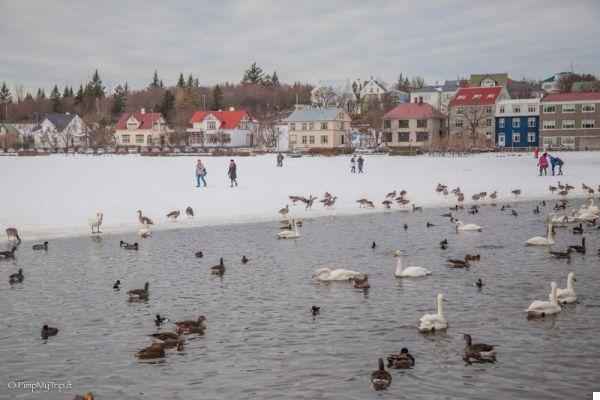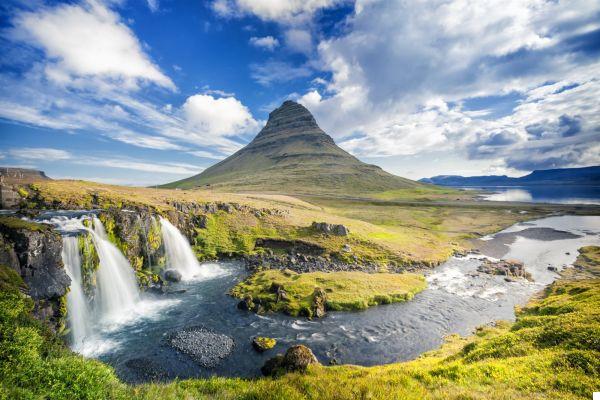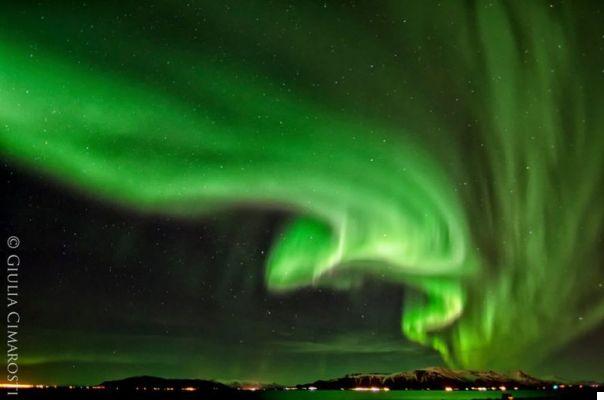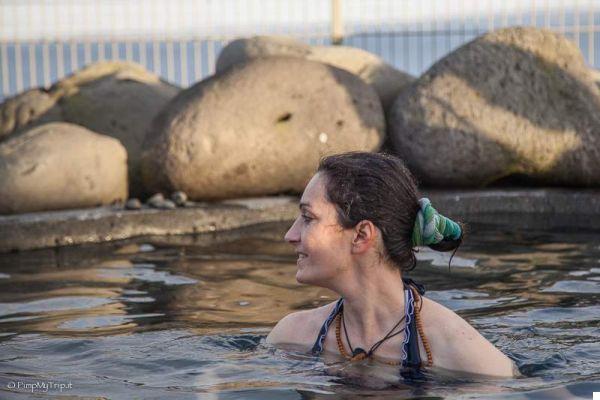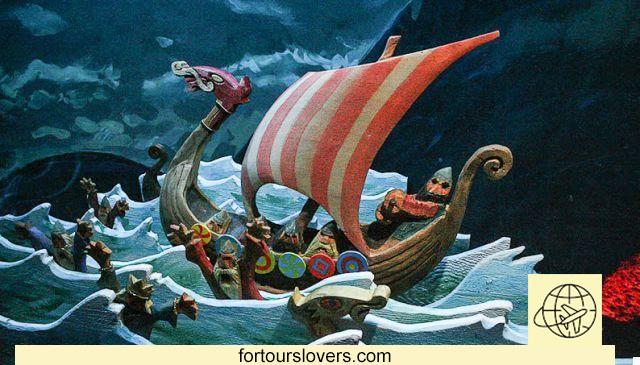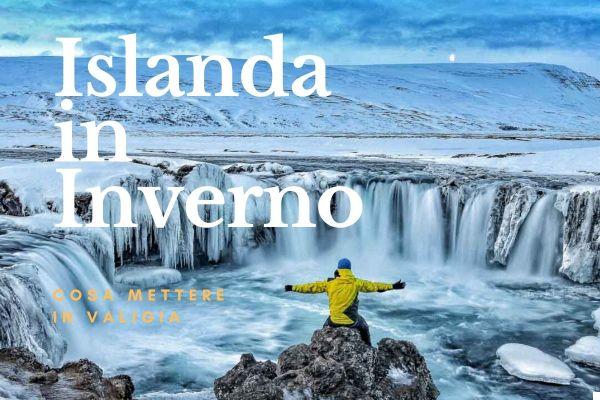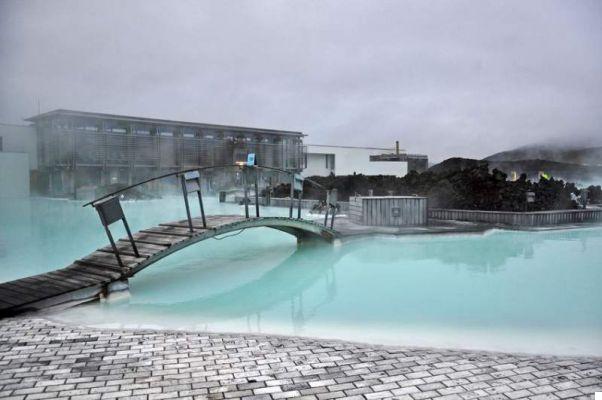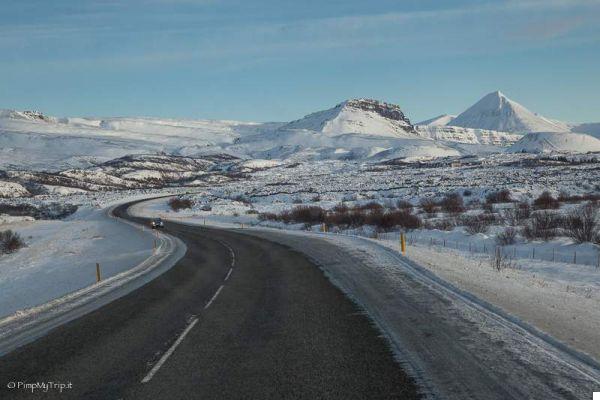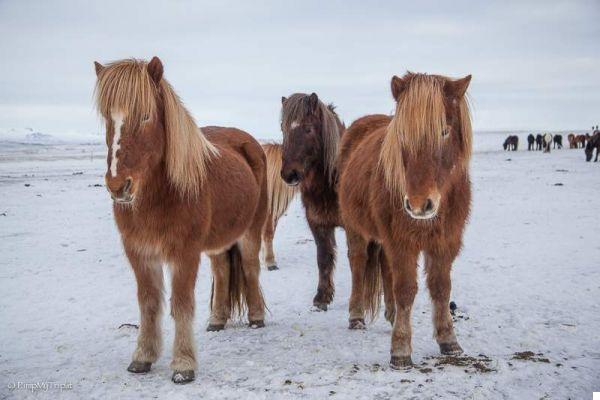THEIceland is a great destination for Whale Watching. During our trip we relied on an agency that did it responsibly and, what can I say, we were rewarded!
There are dreams that one puts in the drawer and hopes to realize, sooner or later. One of mine has always been to be lucky enough to at least once see whales in Iceland and maybe spot the great sea killer whale, the predator par excellence of the oceans.
And I succeeded.
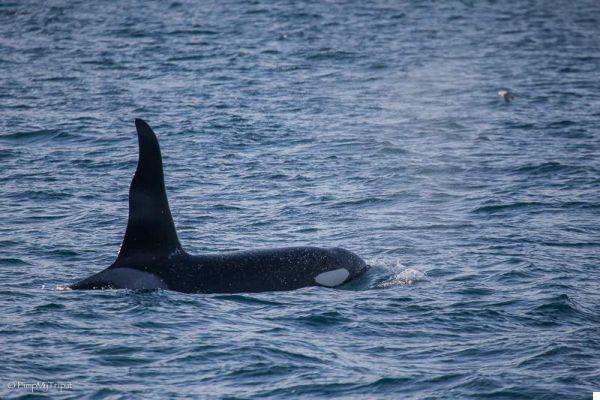
If you are looking for where to do whale watching in Iceland, in this post I will give you all the info on the best places, the right time and lots of advice.
- Where to go whale watching in Iceland
- Whale watching in Iceland: When is the best time?
- Whale watching in Iceland: what animals can you see?
- How much does Whale Watching cost?
- How to dress for whale watching
- Whale watching in Iceland: our experience
Where to Whale Watching in Iceland
1 - Húsavík
Located on the edge of the baia di Skjálfandi, in northeastern Iceland, the fishing town of Húsavík is recognized as one of the best locations not only in Iceland, but in the world for whale watching.
Húsavík owes its worldwide fame to the ecosystem of its bay. Whales, like other animals, go where there is to eat and the rivers that are present here and the melting of the snow bring a lot of nutrients that form plankton, the favorite food of whales.
Whale watching tours departing from Akureyri and Húsavík, respectively Eyjafjörður and to the bay of Trembling, have the highest success rates in Iceland.
From both locations, many operators have had 100% sighting success on summer tours. So if you want to be sure you see whales you have to come here and around this time.
So if you are looking for the best place to whale watching in Iceland look no further: this is it!
Here for the tours you have a lot of options:
From Húsavík: Traditional whale watching tour: this tour is the most classic and best-selling. It is done aboard a traditional Icelandic oak boat and lasts 3 hours. Eco-Certified!
Silent Whale Watching Tour Tickets from Húsavík: by super-silent electric boat (so you don't scare the whales), tour that lasts 3 hours.
- >> See other tours from Húsavík here
2 - Reykjavík
If you are looking for cosa fare a Reyjavík, a whale watching tour is not to be missed.
I myself was surprised that the capital offered tours directly from here. One of the reasons for doing this is certainly the convenience: you will not have to move and even if you are only a few days, you will have the opportunity to observe these beautiful animals.
But not only. Since in Iceland the weather is danceable and the tours are sometimes canceled due to weather conditions or rough seas, the agencies allow you to enjoy the same tour for free on the following days.
Tours depart from the city's old port and last approximately 3 hours. From here all tours lead to baia di Faxaflói which is not only home to whales, but you can also spot puffins, white-beaked dolphins and many other animals.
Reykjavík tours are very popular so book early.
From Reykjavík: Whale Watching from a Luxury Yacht: the best seller! The tour lasts 3 hours and the boat, a luxury yacht, offers 3 observation decks.
Da Reykjavik: Express Whale Watching Tour in gommone: an adrenaline-pumping tour on a rigid inflatable boat, you will also be able to closely observe the coast with the nesting of puffins.
Classic whale watching tour: if you don't see them, you can join the same tour for free in the next days.
- >> See other tours in Reykjavic
3 - Snaeffelsness Peninsula
Since I'm sensitive regarding the mistreatment of animals for tourism purposes, while I was organizing the trip to Iceland I was worried, since the Land of Ice and Fire is one of the countries that still hunt them, to look for an agency that would whalewatching responsibly.
Fortunately, my efforts paid off when I found the Laki Tours and I was even more fortunate to discover that the tours they organize start from one of the places I had set for my itinerary: Grundarfjörður nella penisola di Snæfellsness.
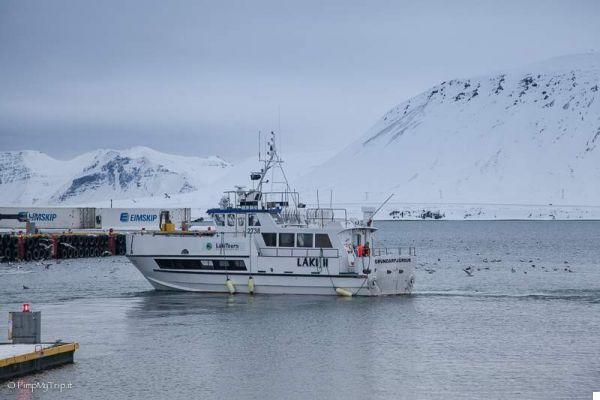
The boat on which we experienced great emotions
The Snæfellsnes peninsula it is one of the best places in Iceland for killer whales or sightings killer whales.
The best time to spot killer whales off the city of Grundarfjörður it is during the winter months while early summer (May and June) is best Ólafsvík a few km further west.
Sperm whales, the largest predator in the sea, and Minke whales are regularly sighted during the summer months.
Many other species have been sighted including fin whales, killer whales and, less often, humpback and blue whales.
I white-beaked dolphins they are resident here all year round and can be seen in both summer and winter.
4 - Akureyri
Near Húsavík is located Akureyri, the second largest city of the entire island. The area is just as good for whale watching, but it has an added strength: being bigger there are so many other things to do!
Another of Akureyri's strengths is that the tours almost all go to Iceland's longest fjord, Eyjafjörður. Thanks to its position, the fjord is sheltered from the strongest winds and the highest waves so if you suffer from seasickness, this is the place that is absolutely for you.
Whale watching in Akureyri: the classic tour. Three hours of sailing along the Eyjafjörður fjord.
Whale watching at Hjalteyri: a well kept secret and a new new tour to try. It lasts 2,5 hours.
Whale watching under the midnight sun: this is also a new and highly recommended tour. Seeing whales under the midnight sun must be a great thing.
- >> See other tours in AKUREYRI
5 - Hauganes
About 30 km from Akureyri is the very small town of Hauganes which is located right in the middle of the Eyjafjörður fjord.
Eyjafjörður, Iceland's longest fjord, is a prime destination for spotting more than 10 whale species, including blue whales, fin whales, humpback whales, killer whales, sperm whales and white-beaked dolphins.
Wildlife enthusiasts can also do a tour of the islands of Hrísey and Grímsey from Hauganes to discover about forty bird species. Seals also inhabit these waters and are very often sighted, both in Eyjafjörður and in the nearby fjord of Öxarfjörður.
Hauganes is a very small village with a population of around 140 people. Many whale watching tours depart from here.
Think company Whale watching Hauganes is Iceland's oldest whale watching company and has been operating since 1993!
- >> You can book the Whale Watching tour from Hauganes right from here
6 - Hólmavík
This is a real novelty: the tours of Hólmavík, in the Westfjords, have only started a few years ago and are also run by Laki Tours (the one I went with).
This area is beautiful and remote, and in the winter it is not recommended to go, but in the summer you may even be lucky enough to watch humpback whales jump into the water directly from the coast.
La both in Steingrímsfjörður where the tours are made has generally calm waters, so this area is also recommended for those suffering from seasickness.
Whale watching in Iceland: When is the best time?
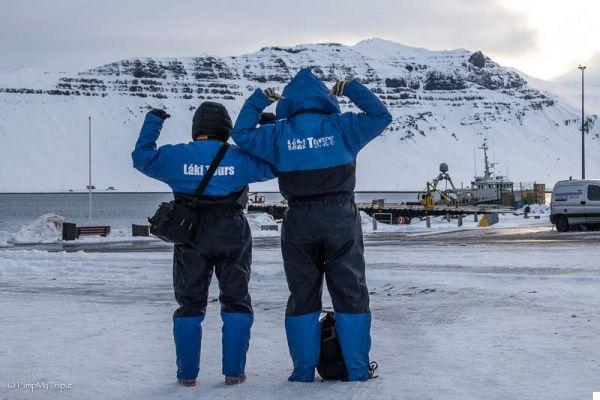
Whale watching tours are great to do all year round, but depending on the season, your experience will be very different.
Whale watching tours are often combined with sea fishing and puffin watching. The high season for whale watching starts in April and lasts until mid-October.
However, many whales remain in Icelandic waters throughout the year. The success rate of summer tours is over 95%, in the north it is even over 98%.
Let's see together the best times for whale watching in Iceland.
1 - Whale watching from April to October
Il period from April to October, is the best for whale watching in Iceland.
First because there are more whales, since these animals have migratory routes that bring them here during this period and that make it one of the places with the greatest density of these animals (and also of different species).
Second: the sea is calmer and the best time, so it is easier to observe them and you will not suffer from the cold that anyway, even if you are given overalls that protect you, it stings your face.
Third, in addition to the whales you will be able to spot a lot of other animals, including the funny and very nice puffins!
2 - Whale watching from October to March
Even if this is not the perfect time for whale watching (alas in fact I have only seen sea killer whales), you are still in Iceland, between the best destinations in the world for whale watching, still worth a try, right?
Furthermore, whale watching during this period has great advantages.
First of all you will find far fewer people than in the summer. This means that there will be fewer people aboard the boat so you will have the space you need not only to watch the whales, but also to see them well leaning against the railing, rather than having to elbow through the thronging crowd. Trust me this is already a great advantage!
Second big advantage: the fiordo di Breiðafjörður, which divides the Westfjords and the Snæfellsnes Peninsula, is a wintering ground for herring and plenty of food attracts many predators, like the sea killer whale.
In winter you will therefore have much more chances to see the killer whale than in summer.
But not only that and I'm talking about one of my dreams that I have not yet realized: if you are very lucky you will be able to see the beluga. The beluga, shy and candid, is not typical of these areas (it lives in the Arctic), but in winter it happens that it goes south to look for an area with less ice and therefore gets here.
Third and final advantage: Iceland in winter is exceptional and you will have a spectacle around you with the snow-capped peaks plunging into the sea. Trust me. But not only. You could be so lucky to see a whale under the Northern Lights!
Whale watching in Iceland: what animals can you see?
During the summer months, when there is a lot of plankton, they are more than 20 different whale species that populate these waters and come here to feed.
The most common species you will be able to spot on your tour are the ones below.
Blue whale and fin whale
La Blue whale it is the largest mammal on the planet, it grows up to 30 meters in length and is known for its drooping jaws. In Iceland you can see it during the summer.
To go more specifically, you will be able to see it from April to July in the north (Akureyri and Húsavík), and you will find them in the south in the months of September and October.
La fin whale it loses compared to the blue whale in comparison to the size of a few meters, but it is still a beautiful sight!
Minke whale
La minke whale it is the most often seen species of whale in Iceland and can reach 10 meters in length.
Minke whales in Iceland can be seen all year round, but increase in numbers during the summer months.
Humpback whale
Also known for being curious, the humpback whale they love to put on a show and have a reputation for being very active. Often found in the north of the country, humpback whales in Iceland are a delight to see!
While humpback whales are most commonly seen during the summer months, they have also been spotted in February and March.
Killer whales
Le orcas in Iceland they are often seen in the summer months of June and July. Also commonly known as killer whales, killer whales tend to move frequently, making them more difficult to spot.
If you're looking for killer whales on your whale watching tour in Iceland, try the southern or eastern fjords.
Sperm whale
The largest of the toothed whales and famous for being the protagonist of Moby Dick, i sperm whales in Iceland they can be seen in the summer months from April to September, especially in the west.
In addition to whales, marine animals such as sharks, dolphins and seals can be found in Iceland.
How much does whale watching cost?
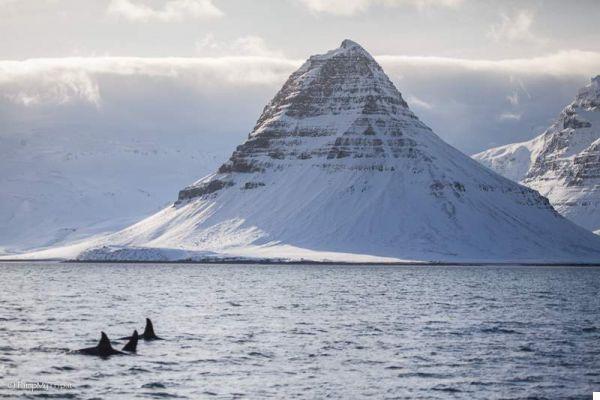
Il whale watching in Iceland has different prices depending on the tour you choose to do.
Prices vary depending on the season, area of duration of the tour, of the Skills offered, of type of boat used or if you will choose a small private group or a larger boat shared with other passengers.
The prices, however, vary from 70 euros up to 120 euros and even more if you choose a tour that lasts a whole day.
The price also varies according to the type of boat used.
I classic tours generally they have a cheaper cost, the boat is large and offers in addition to the observation deck also an internal area with a bar, where you can warm up and have a drink.
Some tours are done on traditional icelandic oak boats, which certainly adds something more authentic to the tour.
I rigid inflatable boat tour (RIB) are the most expensive, but the inflatable boats are much faster (and therefore fun) and generally manage, being smaller, to get much closer to the whales. Plus, being smaller, there are far fewer people.
Il price of a tour obviously it also depends on many other factors. First of all the duration. It goes without saying that a 3-hour tour costs less than a full-day tour, which also includes lunch and snacks.
Some tours cost slightly more because the “snack” with snacks and hot drinks is included, others cost a little less, but you can buy drinks and food in the boat bar.
How to dress for whale watching
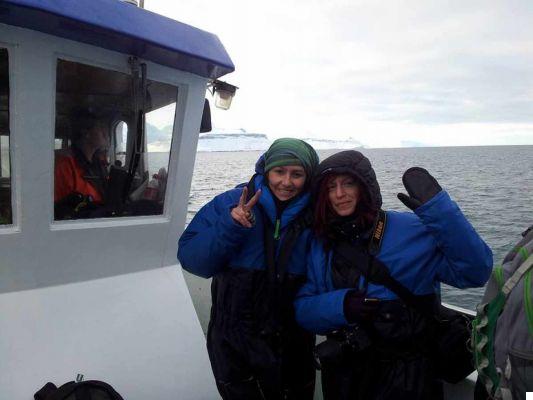
Iceland is known for having a cold and quite schizophrenic climate: this means that you may find days when it shivers, winds or rains even in summer.
In addition, the wind blows hard and stings the face. In any case, both in summer and even more so in winter, if you decide to take a tour to see the whales, it is recommended to dress in warm and comfortable clothes and maybe wear a anorak.
Many Icelandic whale watching tours provide guests with warm suits and accessories, but it's best to be prepared just in case.
The rule, however, is that of to dress in layers.
Un hat is indispensable or one band to cover your ears and stay warm.
Another essential accessory are the shoes. Avoid high heels, boat decks are often made slippery by splashes of water and saline, so you need shoes that help you not get a flap on the ground, like trekking shoes or of the boots.
Whale watching in Iceland: our experience
And now that I've told you (almost) everything about whale watching in Iceland, it's time for me to tell you tell my experience.
After a sleepless night hunting fornorthern Lights, we wake up early in the morning and arrive in front of the Laki Tours office just five minutes before it opens.
We get the tickets, we put on the suits they provide us to shelter from the freezing winter wind and we are already at sea.
We almost immediately meet a large family of white rostrum dolphins (lagenorinco rostrobianco). This type of dolphins are among the largest and are endemic to Iceland. They are also very smart, acrobatic and social and they seem to like our boat.
They swim, jump, dive, suddenly change direction, disappear and reappear soon after. The captain turns off the engines so as not to bother them and for about forty minutes they give us a beautiful show.
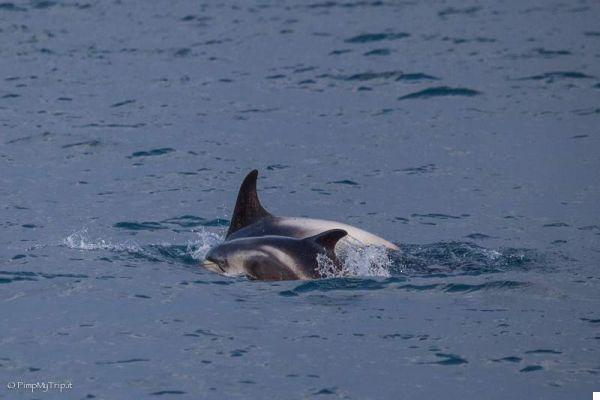
A white beak dolphin swims fast with its baby ... tenderness?
Even if I am happy to observe the dolphins playing around us, I can hardly contain the rush: in fact I hope to be able to spot a whale or at best a killer whale: unfortunately during the initial briefing the biologist who accompanies us explains that it is difficult to spot them because they are generally far offshore from the coast.
We say goodbye to our dolphin friends a little sadly and head towards the exit from the fjord. The wind is cold, but none of us go below deck: Iceland offers wonderful views from this stretch of sea, with the Kirkjufell illuminated by the first rays of the sun and the perennial glacier of Snæfellsjökull peeping through the clouds on the horizon.
We leave the fjord to go further out in search of whales, the sea is agitated by the wind and the white ripples of the waves occasionally make us burst into some cry of hope that immediately goes out together with our enthusiasm.
Apart from a few seals we see absolutely nothing for at least a couple of hours.
But life has taught me (and never misses an opportunity to prove it) that the things we want most are often the ones that require the most calm and patience of all.
"You guys are really very lucky, there are two killer whales right in front of us" announces the voice of the biologist.
A flicker, a big black fin, a puff, and down under the water and the sea waiting again.
A marine orca. And then another. In total we count seven, 2 males and 5 females. They swim quietly without paying any attention to us. Again the engines are turned off and we let the waves carry us.
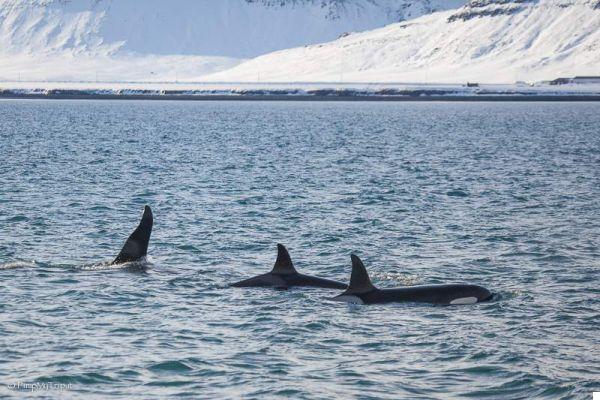
A group of three killer whales: a diving male and his two females
We stay for more than an hour to observe these large mammals with their hearts beating fast, then it's time to go back.
What whale watching in Iceland taught me
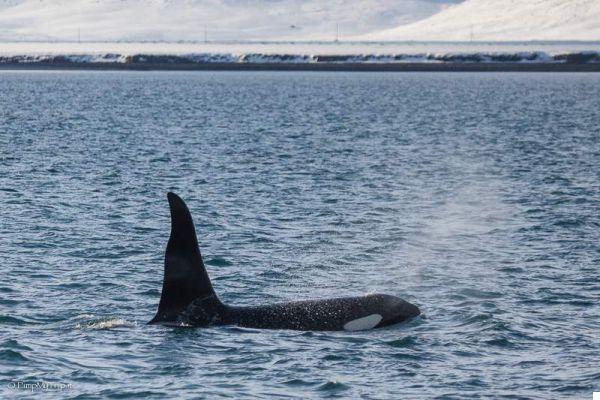
A male killer whale coming out of the water to breathe, one of the greatest emotions of my life!
I had already done it whalewatching before now, ad Uvita in Costa Rica and San Francisco.
In both cases I was lucky, being able to see the whales. But previous times they didn't teach me what whale watching in Iceland taught me, which is that you can't always win.
Nature is like this: wonderful, moody and unpredictable, capable of giving you great disappointments and great happiness.
And when by now, as in this case, you have lost all hope, she is able to amaze you by giving you something you will never forget.
And this is precisely the best thing: nature does what it likes.
Always.
5 / 5 ( 2 votes )



